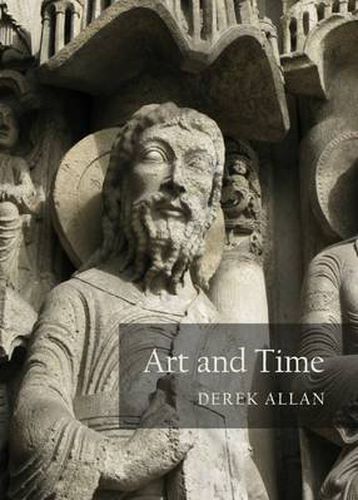Readings Newsletter
Become a Readings Member to make your shopping experience even easier.
Sign in or sign up for free!
You’re not far away from qualifying for FREE standard shipping within Australia
You’ve qualified for FREE standard shipping within Australia
The cart is loading…






A well-known feature of great works of art is their power to live on long after the moment of their creation - to remain vital and alive long after the culture in which they were born has passed into history. This power to transcend time is common to works as various as the plays of Shakespeare, the Victory of Samothrace, and many works from early cultures such as Egypt and Buddhist India which we often encounter today in major art museums.What is the nature of this power and how does it operate? The Renaissance decided that works of art are timeless, immortal - immune from historical change - and this idea has exerted a profound influence on Western thought. But do we still believe it? Does it match our experience of art today which includes so many works from the past that spent long periods in oblivion and have clearly not been immune from historical change?This book examines the seemingly miraculous power of art to transcend time - an issue widely neglected in contemporary aesthetics. Tracing the history of the question from the Renaissance onwards, and discussing thinkers as various as David Hume, Hegel, Marx, Walter Benjamin, Sartre, and Theodor Adorno, the book argues that art transcends time through a process of metamorphosis - a thesis first developed by the French art theorist, Andre Malraux. The implications of this idea pose major challenges for traditional thinking about the nature of art.
$9.00 standard shipping within Australia
FREE standard shipping within Australia for orders over $100.00
Express & International shipping calculated at checkout
A well-known feature of great works of art is their power to live on long after the moment of their creation - to remain vital and alive long after the culture in which they were born has passed into history. This power to transcend time is common to works as various as the plays of Shakespeare, the Victory of Samothrace, and many works from early cultures such as Egypt and Buddhist India which we often encounter today in major art museums.What is the nature of this power and how does it operate? The Renaissance decided that works of art are timeless, immortal - immune from historical change - and this idea has exerted a profound influence on Western thought. But do we still believe it? Does it match our experience of art today which includes so many works from the past that spent long periods in oblivion and have clearly not been immune from historical change?This book examines the seemingly miraculous power of art to transcend time - an issue widely neglected in contemporary aesthetics. Tracing the history of the question from the Renaissance onwards, and discussing thinkers as various as David Hume, Hegel, Marx, Walter Benjamin, Sartre, and Theodor Adorno, the book argues that art transcends time through a process of metamorphosis - a thesis first developed by the French art theorist, Andre Malraux. The implications of this idea pose major challenges for traditional thinking about the nature of art.